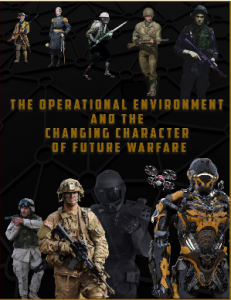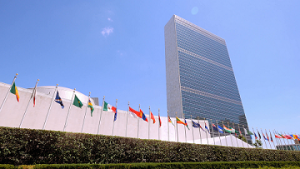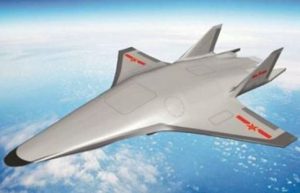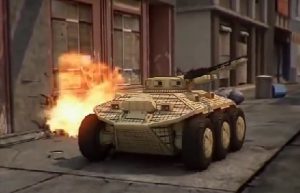 [Editor’s Note: The following post addresses the Era of Contested Equality (2035-2050) and is extracted from the U.S. Army Training and Doctrine Command (TRADOC) G-2’s The Operational Environment and the Changing Character of Future Warfare, published last summer. This seminal document provides the U.S. Army with a holistic and heuristic approach to projecting and anticipating both transformational and enduring trends that will lend themselves to the depiction of the future.]
[Editor’s Note: The following post addresses the Era of Contested Equality (2035-2050) and is extracted from the U.S. Army Training and Doctrine Command (TRADOC) G-2’s The Operational Environment and the Changing Character of Future Warfare, published last summer. This seminal document provides the U.S. Army with a holistic and heuristic approach to projecting and anticipating both transformational and enduring trends that will lend themselves to the depiction of the future.]
 Changes encountered during the Future Operational Environment’s Era of Accelerated Human Progress (the present through 2035) begin a process that will re-shape the global security situation and fundamentally alter the character of warfare. While its nature remains constant, the speed, automation, ranges, both broad and narrow effects, its increasingly integrated multi-domain conduct, and the complexity of the terrain and social structures in which it occurs will make mid-century warfare both familiar and utterly alien.
Changes encountered during the Future Operational Environment’s Era of Accelerated Human Progress (the present through 2035) begin a process that will re-shape the global security situation and fundamentally alter the character of warfare. While its nature remains constant, the speed, automation, ranges, both broad and narrow effects, its increasingly integrated multi-domain conduct, and the complexity of the terrain and social structures in which it occurs will make mid-century warfare both familiar and utterly alien.
During the Era of Contested Equality (2035-2050), great powers and rising challengers have converted hybrid combinations of economic power, technological prowess, and virulent, cyber-enabled ideologies into effective strategic strength. They apply this strength to disrupt or defend the economic, social, and cultural foundations of the old  Post-World War II liberal order and assert or dispute regional alternatives to established global norms. State and non-state actors compete for power and control, often below the threshold of traditional armed conflict – or shield and protect their activities under the aegis of escalatory WMD, cyber, or long-range conventional options and doctrines.
Post-World War II liberal order and assert or dispute regional alternatives to established global norms. State and non-state actors compete for power and control, often below the threshold of traditional armed conflict – or shield and protect their activities under the aegis of escalatory WMD, cyber, or long-range conventional options and doctrines.
 It is not clear whether the threats faced in the preceding Era of Accelerated Human Progress persist, although it is likely that China and Russia will remain key competitors, and that some form of non-state ideologically motivated extremist groups will exist. Other threats may have fundamentally changed their worldviews, or may not even exist by
It is not clear whether the threats faced in the preceding Era of Accelerated Human Progress persist, although it is likely that China and Russia will remain key competitors, and that some form of non-state ideologically motivated extremist groups will exist. Other threats may have fundamentally changed their worldviews, or may not even exist by  mid-Century, while other states, and combinations of states will rise and fall as challengers during the 2035-2050 timeframe. The security environment in this period will be characterized by conditions that will facilitate competition and conflict among rivals, and lead to endemic strife and warfare, and will have several defining features.
mid-Century, while other states, and combinations of states will rise and fall as challengers during the 2035-2050 timeframe. The security environment in this period will be characterized by conditions that will facilitate competition and conflict among rivals, and lead to endemic strife and warfare, and will have several defining features.
• The nation-state perseveres. The nation-state will remain the primary actor in the international system, but it will be weaker both domestically and globally than it was at the start of the century. Trends of fragmentation, competition, and  identity politics will challenge global governance and broader globalization, with both collective security and globalism in decline. States share their strategic environments with networked societies which increasingly circumvent governments unresponsive to their citizens’ needs. Many states will face challenges from insurgents and global identity networks – ethnic, religious, regional, social, or economic – which either resist state authority or ignore it altogether.
identity politics will challenge global governance and broader globalization, with both collective security and globalism in decline. States share their strategic environments with networked societies which increasingly circumvent governments unresponsive to their citizens’ needs. Many states will face challenges from insurgents and global identity networks – ethnic, religious, regional, social, or economic – which either resist state authority or ignore it altogether.
• Super-Power Diminishes. Early-century great powers will lose their dominance in command and control, surveillance, and precision-strike technologies as even non-state actors will acquire and refine their own application of these technologies in conflict and war. Rising competitors will be able to acquire capabilities through a broad knowledge diffusion, cyber intellectual property theft, and their own targeted investments without having to invest into massive “sunken” research costs.  This diffusion of knowledge and capability and the aforementioned erosion of long-term collective security will lead to the formation of ad hoc communities of interest. The costs of maintaining global hegemony at the mid-point of the century will be too great for any single power, meaning that the world will be multi-polar and dominated by complex combinations of short-term alliances, relations, and interests.
This diffusion of knowledge and capability and the aforementioned erosion of long-term collective security will lead to the formation of ad hoc communities of interest. The costs of maintaining global hegemony at the mid-point of the century will be too great for any single power, meaning that the world will be multi-polar and dominated by complex combinations of short-term alliances, relations, and interests.
This era will be marked by contested norms and persistent disorder, where multiple state and non-state actors assert alternative rules and norms, which when contested, will use military force, often in a dimension short of traditional armed conflict.
For additional information on the Future Operational Environment and the Era of Contested Equality:
• Listen to Modern War Institute‘s podcast where Retired Maj. Gen. David Fastabend and Mr. Ian Sullivan address Technology and the Future of Warfare
• Watch the TRADOC G-2 Operational Environment Enterprise’s The Changing Character of Future Warfare video.



